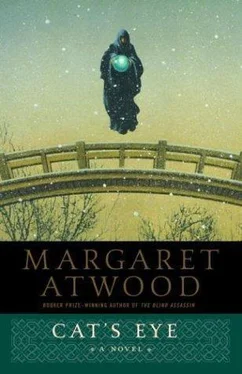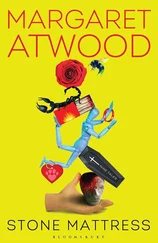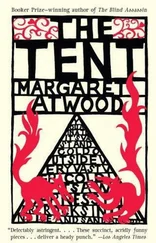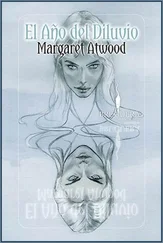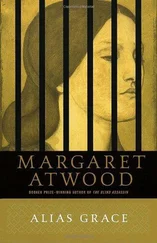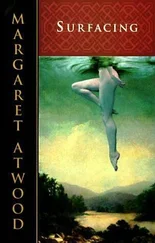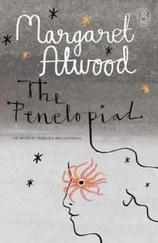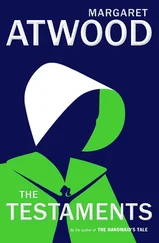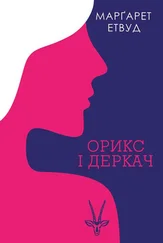Margaret Atwood - Cat's eye
Здесь есть возможность читать онлайн «Margaret Atwood - Cat's eye» весь текст электронной книги совершенно бесплатно (целиком полную версию без сокращений). В некоторых случаях можно слушать аудио, скачать через торрент в формате fb2 и присутствует краткое содержание. Жанр: Старинная литература, на английском языке. Описание произведения, (предисловие) а так же отзывы посетителей доступны на портале библиотеки ЛибКат.
- Название:Cat's eye
- Автор:
- Жанр:
- Год:неизвестен
- ISBN:нет данных
- Рейтинг книги:5 / 5. Голосов: 1
-
Избранное:Добавить в избранное
- Отзывы:
-
Ваша оценка:
- 100
- 1
- 2
- 3
- 4
- 5
Cat's eye: краткое содержание, описание и аннотация
Предлагаем к чтению аннотацию, описание, краткое содержание или предисловие (зависит от того, что написал сам автор книги «Cat's eye»). Если вы не нашли необходимую информацию о книге — напишите в комментариях, мы постараемся отыскать её.
Cat's eye — читать онлайн бесплатно полную книгу (весь текст) целиком
Ниже представлен текст книги, разбитый по страницам. Система сохранения места последней прочитанной страницы, позволяет с удобством читать онлайн бесплатно книгу «Cat's eye», без необходимости каждый раз заново искать на чём Вы остановились. Поставьте закладку, и сможете в любой момент перейти на страницу, на которой закончили чтение.
Интервал:
Закладка:
Cat’s Eye
Margaret Atwood
Foreword
The paintings and other modern works of art in this book do not exist. Nevertheless, they have been influenced by visual artists Joyce Wieland, Jack Chambers, Charles Pachter, Erica Heron, Gail Geltner, Dennis Burton, Louis de Niverville, Heather Cooper, William Kurelek, Greg Curnoe, and pop-surreal potter Lenore M. Atwood, among others; and by the Isaacs Gallery, the old original. The physics and cosmology sideswiped herein are indebted to Paul Davies, Carl Sagan, John Gribbin, and Stephen W. Hawking, for their entrancing books on these subjects, and to my nephew, David Atwood, for his enlightening remarks about strings.
Many thanks to Graeme Gibson, for undergoing this novel; to my agent, Phoebe Larmore; to my English agents, Vivienne Schuster and Vanessa Holt; to my editors and publishers. Nan Talese, Nancy Evans, Ellen Seligman, Adrienne Clarkson, Avie Bennett, Liz Calder, and Anna Porter; and to my indefatigable assistant, Melanie Dugan; as well as to Donya Peroff, Michael Bradley, Alison Parker, Gary Foster, Cathy Gill, Kathy Minialoff, Fanny Silberman, James Polk, Coleen Quinn, Rosie Abella, C. M. Sanders, Gene Goldberg, John Gallagher, and Dorothy Goulbourne.
When the Tukanas cut off her head, the old woman collected her own blood in her hands and blew it towards the sun.
“My soul enters you, too!” she shouted.
Since then anyone who kills receives in his body, without wanting or knowing it, the soul of his victim.
—EDUARDO GALEANO
Memory of Fire: Genesis
Why do we remember the past, and not the future?
—STEPHEN W. HAWKING
A Brief History of Time
One - Iron Lung
Chapter 1
T ime is not a line but a dimension, like the dimensions of space. If you can bend space you can bend time also, and if you knew enough and could move faster than light you could travel backward in time and exist in two places at once.
It was my brother Stephen who told me that, when he wore his raveling maroon sweater to study in and spent a lot of time standing on his head so that the blood would run down into his brain and nourish it. I didn’t understand what he meant, but maybe he didn’t explain it very well. He was already moving away from the imprecision of words.
But I began then to think of time as having a shape, something you could see, like a series of liquid transparencies, one laid on top of another. You don’t look back along time but down through it, like water. Sometimes this comes to the surface, sometimes that, sometimes nothing. Nothing goes away.
Chapter 2
“S tephen says time is not a line,” I say. Cordelia rolls her eyes, as I knew she would.
“So?” she says. This answer pleases both of us. It puts the nature of time in its place, and also Stephen, who calls us “the teenagers,” as if he himself is not one.
Cordelia and I are riding on the streetcar, going downtown, as we do on winter Saturdays. The streetcar is muggy with twice-breathed air and the smell of wool. Cordelia sits with nonchalance, nudging me with her elbow now and then, staring blankly at the other people with her gray-green eyes, opaque and glinting as metal. She can outstare anyone, and I am almost as good. We’re impervious, we scintillate, we are thirteen.
We wear long wool coats with tie belts, the collars turned up to look like those of movie stars, and rubber boots with the tops folded down and men’s work socks inside. In our pockets are stuffed the kerchiefs our mothers make us wear but that we take off as soon as we’re out of their sight. We scorn head coverings. Our mouths are tough, crayon-red, shiny as nails. We think we are friends. On the streetcars there are always old ladies, or we think of them as old. They’re of various kinds. Some are respectably dressed, in tailored Harris tweed coats and matching gloves and tidy no-nonsense hats with small brisk feathers jauntily at one side. Others are poorer and foreign-looking and have dark shawls wound over their heads and around their shoulders. Others are bulgy, dumpy, with clamped self-righteous mouths, their arms festooned with shopping bags; these we associate with sales, with bargain basements. Cordelia can tell cheap cloth at a glance. “Gabardine,” she says. “Ticky-tack.”
Then there are the ones who have not resigned themselves, who still try for an effect of glamour. There aren’t many of these, but they stand out. They wear scarlet outfits or purple ones, and dangly earrings, and hats that look like stage props. Their slips show at the bottoms of their skirts, slips of unusual, suggestive colors. Anything other than white is suggestive. They have hair dyed straw-blond or baby-blue, or, even more startling against their papery skins, a lusterless old-fur-coat black. Their lipstick mouths are too big around their mouths, their rouge blotchy, their eyes drawn screw-jiggy around their real eyes. These are the ones most likely to talk to themselves. There’s one who says “mutton, mutton,”
over and over again like a song, another who pokes at our legs with her umbrella and says “bare naked.”
This is the kind we like best. They have a certain gaiety to them, a power of invention, they don’t care what people think. They have escaped, though what it is they’ve escaped from isn’t clear to us. We think that their bizarre costumes, their verbal tics, are chosen, and that when the time comes we also will be free to choose.
“That’s what I’m going to be like,” says Cordelia. “Only I’m going to have a yappy Pekinese, and chase kids off my lawn. I’m going to have a shepherd’s crook.”
“I’m going to have a pet iguana,” I say, “and wear nothing but cerise.” It’s a word I have recently learned.
Now I think, what if they just couldn’t see what they looked like? Maybe it was as simple as that: eye problems. I’m having that trouble myself now: too close to the mirror and I’m a blur, too far back and I can’t see the details. Who knows what faces I’m making, what kind of modern art I’m drawing onto myself? Even when I’ve got the distance adjusted, I vary. I am transitional; some days I look like a worn-out thirty-five, others like a sprightly fifty. So much depends on the light, and the way you squint. I eat in pink restaurants, which are better for the skin. Yellow ones turn you yellow. I actually spend time thinking about this. Vanity is becoming a nuisance; I can see why women give it up, eventually. But I’m not ready for that yet.
Lately I’ve caught myself humming out loud, or walking along the street with my mouth slightly open, drooling a little. Only a little; but it may be the thin edge of the wedge, the crack in the wall that will open, later, onto what? What vistas of shining eccentricity, or madness?
There is no one I would ever tell this to, except Cordelia. But which Cordelia? The one I have conjured up, the one with the rolltop boots and the turned-up collar, or the one before, or the one after? There is never only one, of anyone.
If I were to meet Cordelia again, what would I tell her about myself? The truth, or whatever would make me look good?
Probably the latter. I still have that need.
I haven’t seen her for a long time. I wasn’t expecting to see her. But now that I’m back here I can hardly walk down a street without a glimpse of her, turning a corner, entering a door. It goes without saying that these fragments of her—a shoulder, beige, camel’s-hair, the side of a face, the back of a leg—belong to women who, seen whole, are not Cordelia.
I have no idea what she would look like now. Is she fat, have her breasts sagged, does she have little gray hairs at the corners of her mouth? Unlikely: she would pull them out. Does she wear glasses with fashionable frames, has she had her lids lifted, does she streak or tint? All of these things are possible: we’ve both reached that borderline age, that buffer zone in which it can still be believed such tricks will work if you avoid bright sunlight.
Читать дальшеИнтервал:
Закладка:
Похожие книги на «Cat's eye»
Представляем Вашему вниманию похожие книги на «Cat's eye» списком для выбора. Мы отобрали схожую по названию и смыслу литературу в надежде предоставить читателям больше вариантов отыскать новые, интересные, ещё непрочитанные произведения.
Обсуждение, отзывы о книге «Cat's eye» и просто собственные мнения читателей. Оставьте ваши комментарии, напишите, что Вы думаете о произведении, его смысле или главных героях. Укажите что конкретно понравилось, а что нет, и почему Вы так считаете.
